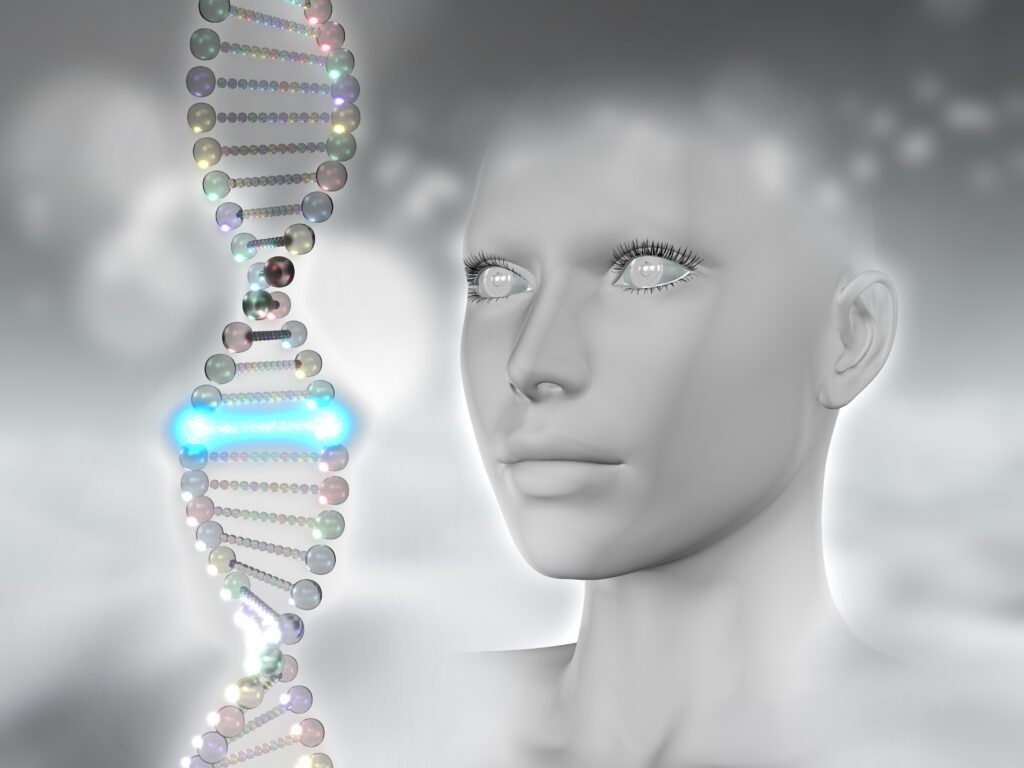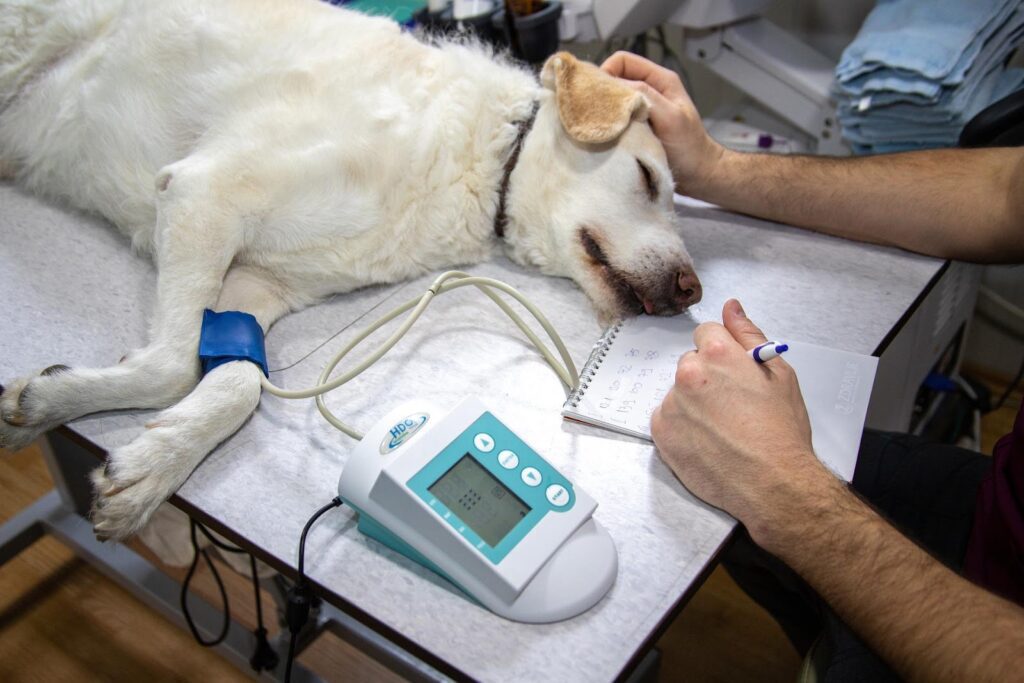Today’s sequencing technologies are growing more advanced and producing larger and larger volumes of data in the range of exa- and zettabytes. Advanced algorithms and applications developed in bioinformatics are becoming increasingly vital in answering the underlying biological concerns of interpreting such massive amounts of data on a big scale. In this article, let’s see what is bioinformatics. What is the difference between bioinformatics and computational biology? Various applications of bioinformatics in modern biology, biotechnology, and medicine, as well as the scope of bioinformatics.
What is Bioinformatics?
To put it very simply, bioinformatics is a field of study that tries to solve biological problems with the help of Information Technology (IT). Bioinformatics is highly interdisciplinary, so apart from IT, other disciplines, such as physics, mathematics, statistics, etc., are also used in bioinformatics to solve biological problems, but since the techniques of other disciplines are applied through computers, everything is broadly taken into IT.
The term bioinformatics was first used in 1992 to describe the development of databases to store information about genomes. Since then, it has extended to encompass many other aspects of genomic research, including computational methods for gene mapping, DNA sequencing, etc. Paulien Hogeweg and Ben Hesper coined the term bioinformatics to describe “the study of informatic processes in biotic systems,” and it was quickly adopted when the first biological sequence data became available.
With the advancement of human genome projects and sequencing projects, the biological field has been flooded with a vast amount of data. Therefore, nowadays, bioinformatics is seen as a much broader science that includes big data analysis, modeling, and image analysis in addition to the traditional methods for comparing linear sequences and three-dimensional structures.

Definition of Bioinformatics
Bioinformatics is an interdisciplinary field that develops methods and software tools for analyzing biological data. The ultimate goal of bioinformatics is to apply existing knowledge in areas such as computer science, mathematics, statistics, and engineering to solve problems in biology. Given that life sciences are largely empirical rather than theoretical in nature, it’s easy to see why scientists have found bioinformatics so helpful. In many cases, bioinformaticians use mathematical algorithms that have been invented for other fields like statistics or information theory but implement them within a biological context. This allows scientists to apply cutting-edge technological solutions more quickly than they otherwise would be able to do.
Bioinformatics: Research, development, or application of computational tools and approaches for expanding the use of biological, medical, behavioral or health data, including those to acquire, store, organize, archive, analyze, or visualize such data.
NIH
Bioinformatics can really be a big boom in the near future in the field of biology and medicine. It can contribute to a functional understanding of the human genome to a greater extent, leading to improved target drug manufacturing. Bioinformatics helping in the field of veterinary, crop production, medicine, cleaning, and military, can change the face of tomorrow. Thus, this could lead to improved production, minimizing cost, and improving the overall lifestyle of an individual.
Difference between Bioinformatics & Computational Biology
Bioinformatics and computational biology are often used interchangeably in academia, but are they really the same thing? Bioinformatics and computational biology are closely related fields of study that involve the analysis of biological data, including DNA sequencing and protein folding, as well as the production of results that enable biologists to understand this data better. Some people use the terms bioinformatics and computational biology interchangeably when they really shouldn’t be used as synonyms.
In this article, we’ll go over the key differences between bioinformatics and computational biology to better understand how each one differs from the other.
The term bioinformatics itself refers to any process that uses information technology to advance biology or medicine. Bioinformatics is an interdisciplinary field of science that uses tools from computer science, statistics, mathematics, engineering, biochemistry, and other fields to analyze biological data.
Computational Biology: The development and application of data-analytical and theoretical methods, mathematical modeling and computational simulation techniques to the study of biological, behavioral, and social systems.
NIH
While computational biology is an interdisciplinary field that develops mathematical and computational models, algorithms, software tools, and platforms for understanding biological systems. It is also about applying computer science approaches to problems in biology. In simple words, it is all about applying computer science techniques to biology research. That’s why many people consider computational biology a subfield of bioinformatics.
Applications of Bioinformatics
Bioinformatics is a vast subject and has a wide range of applications in modern biology and medicine, from genomic research laboratories, computing next-generation sequencing, target drug manufacturing to the prevention of disease, military, warfare, agriculture, pharma sector a renewable energy source, biofuels, etc.
Following are some of the applications of bioinformatics:-
- Precision Medicine
Bioinformatics has played a significant role in discovering personalized drugs. These personalized drugs are prepared according to the genes of the person. Also, bioinformatics in pharmaceuticals has helped in manufacturing target-based effective drugs for infectious diseases. It has helped in discovering preventive drugs as well. It has become a vital part of healthcare infrastructure in detecting disease and the path to its cure.

- Drug Discovery
Bioinformatics, in combination with computational biology, is helping scientists analyze mechanisms and patterns in disease, leading to the invention of targeted drugs at an effective cost.
More targeted treatments that act on the cause, not just the symptoms, can be developed with a better understanding of disease mechanisms and the use of computational methods to find and verify new therapeutic targets. These highly targeted therapies are expected to have fewer adverse side effects than many current medications.
In cancer drug discovery, bioinformatics is applied in the organization and analysis of the data to identify relevant trends and patterns, with the ultimate goal of developing new cancer treatment and diagnostic techniques.
In the case of microbial infections, bioinformatics is commonly utilized in the field of drug discovery to analyze microbial gene sequences, develop microbial synthesis techniques, and engineer enzymes.

- Predictive Medicine
Predictive medicine is a branch of medicine that involves predicting the likelihood of disease and putting in place preventive measures to either totally prevent or significantly reduce the disease’s impact on the patient.
Newborn screening, diagnostic testing, medical bioinformatics, prenatal testing, carrier testing, and preconception testing are some of the techniques and assays used. Newborn screening is a public health initiative that screens infants shortly after birth for a number of illnesses that are curable but not clinically apparent during the newborn period.
- Gene Therapy
Gene therapy is a biological technique through which unhealthy cells are treated with genetic materials in order to prevent, cure and treat disease. Some of its applications in gene therapy are identifying types of cancer, analyzing data, and analyzing biological molecules such as proteins, DNA, RNA, etc.

- Genome Sequencing of Microbes
The microbial genome sequence is used in almost every field of medicine and biology, from drug manufacturing to the discovery of vaccines. Genome sequencing of microbes comprises chromosomal components and all the genetic material of a cell or, in general, bacteria.
The application of bioinformatics may considerably increase the efficiency of a data-intensive process like identifying the genetic diversity of a huge number of microorganisms. Bioinformatics technology can give researchers an accurate and efficient way to characterize bacteria using protein sequence, DNA sequence, and protein structure information.
Pathogenic bacteria and their virulence genes can be located quickly and comprehensively using genome-wide homology analysis. For example, the annotation of vast sequence data of microbial genomes can be achieved by constructing a genome barcode database using high-throughput sequencing and bioinformatics technologies, which is of tremendous practical value for disease prevention and diagnosis as well as treatment.

- Combating Antimicrobial Resistance
Antimicrobial resistance (AMR) is a major public health issue around the world. Advances in whole genome sequencing and other unbiased high-throughput instrumental technologies for studying the molecular pathogenicity of infectious diseases have allowed for the accumulation of large amounts of data that can be analyzed using bioinformatics and the discovery of new AMR signatures.
As a result, bioinformatics tools and techniques are critical in preventing bacterial resistance, pathogen identification and type, finding markers for early diagnosis and treatment, enabling individualized treatments, and forecasting patient outcomes.

- Improvement in Crop Production
Bioinformatics is now helping in the improvement of crop production as well as modern biology. Through the effective use of proteomic, metabolomic, and genetic tools of computational biology, scientists are able to develop more drought-resistant and insect-resistant crops. This, again, proves to be a cost-minimizing technique in the edible market. This also improves the productivity of crops and helps meet the high demand.
Researchers were able to discover ‘chromosomal’ and ‘difference’ factors in sequences after sequencing the genomes of several key plant species. This has led to the identification of valuable features for crop development. For example, rice-barley comparisons revealed the barley stem rust-resistant gene.
Bacillus thuringiensis is a bacterial species that boosts soil fertility while also protecting plants from pests. When the researchers mapped its genome, they incorporated its genes into the plant to make it insect-resistant. So far, insect resistance has been achieved in corn, cotton, and potatoes.

- Improving Nutritional Quality
When genome modifications are introduced in plants, the nutritional value of the plant rises as well. In this endeavor, golden rice is a significant accomplishment. The genes are put into the rice genome to boost the crop’s Vitamin A levels. Vitamin A is a crucial component for the eyes, and a Vitamin A deficit in the body can cause blindness. This work has helped scientists to lessen the global rate of blindness by providing people with genetically modified rice.
- Used in Biotechnology
In biotechnology, there is a wide range of applications of bioinformatics. Some of the important applications include genome sequencing, genome alignment, identification of genes, comparing the alignments of gene pairs so as to identify the functions of the gene, gene expression analysis, phylogenetic analysis, molecular modeling, docking, drug design, vaccine design, proteomics, etc.

- In the field of Veterinary Science
Veterinary Science is touching the skies with the help of bioinformatics. It mainly focuses on the genome sequencing of animals. Gaining a better understanding of animal biology through genomics is required to increase animal productivity. This helps improve their overall health, which further enhances production, leading to cost efficiency.
Nearly all next-generation omics technologies and methodologies employed in other biology domains can be applied to veterinary science.

- Study of Evolution
Evolutionary studies compare biological genomic data and help find out different species, identifying their families, functions, and characteristics. Bioinformatics is used to create phylogenetic trees based on sequence alignment using various approaches. For the creation of phylogenetic trees, many computational approaches have been created that are applied based on the evolutionary lineages.
The evolutionary relationship of microorganisms is relatively complicated, making tracing analyses difficult. Scientists may quickly build evolutionary trees and define evolutionary relationships among species and molecules using bioinformatics analysis, meeting a variety of needs in pharmaceutics, diagnostics, the food industry, environmental protection, and other fields.

- Alternative Energy Source
The generation and storage of renewable energy sources are a big problem today. And this is the barrier to the adoption of renewable energy. Like trees that store solar energy harvested during photosynthesis using proteins, they create a blueprint for scientists to think in this way. Through bioinformatics, proteins can play a key role in this area for storage, if not today, then maybe in the future.
With the help of bioinformatics, scientists are analyzing the genome of the microbe Chlorobium tepidum which has a unique capacity to generate energy from light.

- Production of Biofuels
There is a great demand for microalgal biofuels as an alternative to regular ones and in the range of renewable sources. However, biofuels are costlier than petroleum. Therefore to give it a cost-competitive edge, bioinformatics is used. Recent advances in this field have accelerated the identification of metabolic pathways and genes, which helps in the development of microalgal strains with as much lipid content as required.
Understanding and analyzing biofuel production processes requires bioinformatics. Recent advances in algal genomics, combined with other “omics” approaches, have aided in the identification of metabolic pathways and genes that could be used to construct genetically engineered microalgal strains with optimal lipid content.

- Waste Cleanup
To clear up the waste materials, such as cleaning sewage, cleaning oil spills, removing radioactive waste, etc., is also done with the help of bioinformatics. Here first, the DNA sequencing of bacteria and microbes is done. Thereby the chemicals are prepared accordingly, keeping in mind the particular sequencing.
Deinococcus radiodurans, the bacteria mentioned in the Guinness Book of World Records, for its ability to repair broken DNA and tiny fragments from chromosomes by isolating damaging portions in a concentrated area. Genes from other bacteria were introduced into D. radiodurans for environmental cleanup. It was employed in radioactive waste sites to break down organic compounds, solvents, and heavy metals.
Moreover, understanding the processes of biodegradative pathways requires the use of bioinformatics techniques.
- Stem Cell Therapy
With the increasing global warming and the depleting ozone layer, apart from environmental problems, skin problems are arising too. Infections and diseases in epithelial tissues and stem cells are becoming common. With the advancement of biotechnological techniques, transcriptome and multi-omics sequencing are done to identify therapeutic targets for stem cell interventions. This is further used in diagnosing skin disease genes and pathways to a targeted curable method.

- Development of Bioweapons
Using Genetic engineering and bioinformatics, scientists have developed new weapons that are more effective and devastating than their natural counterparts. These weapons are developed in biological labs. These are compact, minute, and easily relocatable but can do more devastating and inhuman destruction to humankind. Its effects can even last for centuries if once used.
Scientists developed the poliomyelitis virus using artificial means. They leveraged genomic data from the internet and components from a mail-order chemical supply to do this.
- Forensic Science
Forensic data for personal identification refers to biological, i.e., DNA, blood, saliva, etc., physiological, i.e., fingerprints, iris, retina, hand palm and geometry, facial geometry, etc., and voice. These data are important for genetic identification and characteristics and sequence repetitions in families of species. These are also done through bioinformatics.
Many databases are being built to preserve the DNA profiles of known offenders in this discipline, which is based on molecular data. Bacillus anthraces strains used in the terrorist attack in Florida in the summer of 2001 were distinguished from closely related anthrax germs using genetic approaches.

- Climate Change Studies
Carbon dioxide emissions are regarded to be a contributor to global climate change. Studying the genomes of bacteria that use carbon dioxide as their main carbon source is one strategy to reduce atmospheric carbon dioxide.
Bioinformatics may be useful in reducing carbon dioxide and other greenhouse emissions by sequencing microbial genomes. This contributes significantly to the stabilization of global climate change.
Scope of Bioinformatics
Bioinformatics has tremendous importance in modern biology, especially now when we are dealing with microbes smaller than the tip of the needle, in the ranges of nano to femtometers. DNA is called the fundamental molecule of life or the code of life. DNA consists of the hereditary information of an organism. It controls the biological functions and characteristics of an organism. The study of an organism’s DNA and its genome is called Genomics. Genomics helps scientists and biologists understand and identify several genetic disorders of an unhealthy cell. The variations in genes both develop and prevent several diseases. Therefore, it becomes essential to take the study of genomic sequencing further. This is done through bioinformatics. A career in bioinformatics thus has a good scope keeping in mind the development of microbial sequencing.
It is an emerging field that mainly deals with the acquisition of knowledge of hidden biological information from the huge pile of data and understanding sequences in the organisms to develop methods to improve the standard of living for the entire human race.

Career prospects and scope have further increased in bioinformatics with the advancement in fast and cheap sequencing technologies. As a result, bioinformatics is considered necessary for modern biological and medical research and development. Scope for bioinformatics is in every range from biotechnology, hospitals, pharmaceutical, and biomedical sciences, to research institutions, military, agriculture, energy sources, environment, forensic science, etc.
For students in various streams, there are various types of professional prospects available such as Bioinformatician, Bioinformatics Scientist, Scientific Curator, Gene Analyst, Protein Analyst, Phylogenitist, Research Scientist or Associate, Database Programmer, Bioinformatics software developer, Computational Biologist, Network Administrator/Analyst, Structural Analyst, Molecular Modeler, Bio-statistician, Bio-mechanics, Cheminformatics, Pharmacogenetics, Pharmacogenomics.
Conclusion
The recent flood of biological data has given rise to a huge demand for bioinformatics, which establishes a good relationship between biology and computer science. We can say that information science has combined with biology to form a bioinformatics field. So, to conclude, we can say that Bioinformatics is a conceptual approach to biological macromolecules, and then these concepts are applied with informatic techniques such as maths, computer science, statistics, and information technology to understand, analyze and organize the information related to these molecules so as to reach to a conclusion or a result in general.
Analysis of bioinformatics is mainly concerned with three types of data in molecular biology, i.e., macromolecular structures, genome sequences, and functions of genomic experiments. Bioinformatics operates in a wide range of fields from database designing, data mining, macromolecular geometry, gene finding, data clustering, sequencing, and alignment to phylogenetic tree generation. The main emphasis for the use of bioinformatics is to integrate computational methods and data sources and make understanding easy and flexible.
Bioinformatics is going to be on air in the near future, for it is very much applicable in many fields. With the help of bioinformatics, genome sequencing of a large number of prokaryotes and eukaryotes has given access to vast amounts of information that earlier seemed imposition to acquire. This information is really helping scientists and biologists to a greater extent in modern biological research.
Applications of bioinformatics in agriculture, veterinary, gene therapy, drug discovery, biotechnology, waste cleaning, microbial genome, stem cell therapy, evolutionary studies, etc., have already shown its positive effects.
Work in this field becomes easy with the use of high-performance computing (HPC) technologies and the latest computer software developed using artificial intelligence and machine learning techniques. This software offers results of hectic experiments within minutes, which would instead take a longer time, from hours to days to weeks. Careers in these fields will be in a great boom in the coming years. Students and experts would see a huge demand for their work, which eventually signifies increased payouts. In short, the subject of Bioinformatics can offer the highest-paying jobs in the future.
Article Sources:
- Bayat A. (2002). Science, medicine, and the future: Bioinformatics. BMJ (Clinical research ed.), 324(7344), 1018–1022. https://doi.org/10.1136/bmj.324.7344.1018
- Lucia Bianchi, Pietro Liò, Forensic DNA and bioinformatics, Briefings in Bioinformatics, Volume 8, Issue 2, March 2007, Pages 117–128, https://doi.org/10.1093/bib/bbm006
- Wani, M., Ganie, N. A., Rani, S., Mehraj, S., Mir, M. R., Baqual, M. F., … & Dar, K. A. (2018). Advances and applications of bioinformatics in various fields of life. Int J Fauna Biol Stud, 5(2), 03-10.
- http://mccollegeonline.co.in/attendence/classnotes/files/1586267373.pdf
- https://www.genome.gov/genetics-glossary/Bioinformatics
- http://www.binf.gmu.edu/jafri/math6390-bioinformatics/workingdef.pdf
- https://www.facom.ufms.br/~diego/bioinformatics-vs-computational-biology.html
- https://www.azolifesciences.com/article/What-is-Bioinformatics.aspx
- https://collegedunia.com/exams/bioinformatics-fields-application-and-scope-biology-articleid-1454
- https://leverageedu.com/blog/application-of-bioinformatics/
Learn More:
Top Bioinformatics Books ↗
Learn more to get deeper insights into the field of bioinformatics.
Top Free Online Bioinformatics Courses ↗
Freely available courses to learn each and every aspect of bioinformatics.
Latest Bioinformatics Breakthroughs ↗
Stay updated with the latest discoveries in the field of bioinformatics.
Dr. Tamanna Anwar is a Scientist and Co-founder of the Centre of Bioinformatics Research and Technology (CBIRT). She is a passionate bioinformatics scientist and a visionary entrepreneur. Dr. Tamanna has worked as a Young Scientist at Jawaharlal Nehru University, New Delhi. She has also worked as a Postdoctoral Fellow at the University of Saskatchewan, Canada. She has several scientific research publications in high-impact research journals. Her latest endeavor is the development of a platform that acts as a one-stop solution for all bioinformatics related information as well as developing a bioinformatics news portal to report cutting-edge bioinformatics breakthroughs.













